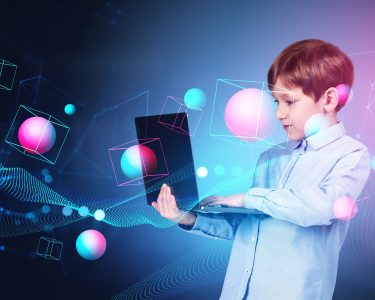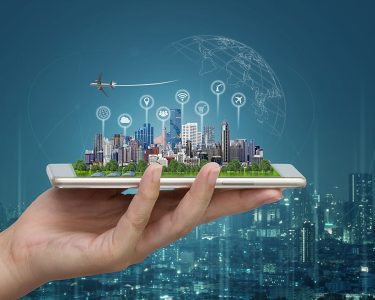Meet the Expert Behind the Lens: Pixel 8
A Decade of Smartphone Photography Expertise
Sarah Mitchell’s journey into the realm of smartphone photography started long before the era of AI-powered cameras. Armed with her trusty smartphone, she began exploring the world through the lens of her device more than a decade ago.
An Early Enthusiast
As an early enthusiast of mobile photography, Sarah witnessed the evolution of smartphone cameras from pixelated, low-resolution sensors to the sophisticated, high-definition lenses we have today. Her dedication to capturing the world around her through this tiny, yet powerful, device has given her a unique perspective on the transformation of smartphone photography.
Sharing Knowledge and Experience
Throughout her journey, Sarah has seen it all – from grainy selfies to stunning landscapes, and from the days when filters were merely a novelty to the current era of artificial intelligence redefining the art of photography. Her passion for photography is not limited to capturing the world around her; she also believes in sharing her knowledge and experiences to help others enhance their photography skills.
Unveiling the Pixel 8
As she embarks on this journey to explore the Pixel 8’s AI photography tools, Sarah brings a wealth of practical experience, a keen eye for detail, and a deep appreciation for the ever-changing world of mobile photography. With her guidance, you’ll not only understand the technology behind AI-enhanced photography but also gain insights into how it can be harnessed to take your smartphone photography to new heights.
The Pixel 8’s AI Revolution
The Evolution of Smartphone Cameras
Before we dive into the magic of the Pixel 8’s AI photography tools, let’s take a moment to appreciate how far smartphone cameras have come in the last few years. The era of blurry, noisy, and washed-out smartphone photos is a distant memory. Today, thanks to advances in computational photography and the integration of artificial intelligence, smartphone cameras have transformed into powerful imaging tools.
AI and Computational Photography
These advancements are nothing short of extraordinary. They combine cutting-edge algorithms, powerful sensors, and AI processing to produce lifelike, high-quality images that were once the exclusive domain of professional photographers. As a result, the line between amateur and professional photography has blurred significantly.
The Pixel 8’s AI-Powered Photography Tools
At the forefront of this photographic revolution is Google, a pioneer in smartphone photography. Google is set to release the Pixel 8, a device equipped with a suite of AI-powered photo editing tools. But these aren’t your standard editing features that merely tweak brightness and sharpness; they use AI to create or remove elements from photos to help you achieve the perfect shot.
Redefining Smartphone Photography
The Pixel 8’s AI photography tools represent a significant leap forward in the world of smartphone photography. They’re designed to make the impossible possible and the extraordinary effortless. To understand the Pixel 8’s magic, let’s explore some of its most compelling features.
Pixel 8’s Magic Editor: Crafting Perfection
The Magic of Seamless Editing
Imagine you’ve taken a beautiful photo, but upon closer inspection, you notice that a person’s shoulder has been accidentally cropped out of the frame. In the past, this might have been a lost moment. But with the Pixel 8’s Magic Editor, you can effortlessly move that person within the image, and the AI takes care of the rest, creating a seamless shoulder.
Precision and Ease
The Magic Editor is one of the standout features of the Pixel 8’s AI photography tools. It allows you to make precise edits to your photos without the hassle of complex software or extensive manual editing.
Erasing Unwanted Elements
Photobombers, those uninvited guests in your carefully composed photos, have been the bane of many photographers. You’ve likely encountered a situation where you’ve taken a perfect shot of a friend in front of a historic monument, only to have it ruined by an oblivious passerby.
AI Editing and Photo Restoration
With the Pixel 8’s AI editing tool, you can effortlessly select these unwanted intruders and make them disappear in seconds, while the AI generates a clean background that seamlessly blends with the rest of the image.
Integration with Google Photos
One of the remarkable aspects of the Pixel 8’s AI photography tools is their integration with Google Photos, a platform used by over a billion Android and iPhone users worldwide. This integration makes AI editing accessible to a massive user base, setting the stage for AI-enhanced photography to become a standard feature in the world of smartphone photography.
The Democratization of AI Photography
While the Pixel 8 leads the charge in making AI editing accessible, it’s likely that other device manufacturers will follow suit, further democratizing the use of AI photography tools. This shift in the industry highlights the transformative power of AI in photography and its potential to redefine how we capture and edit our images.
The Authenticity Dilemma
The Pixel 8’s Magic Editor and its AI-enhanced capabilities are undeniably impressive, but they also raise some thought-provoking questions about the authenticity of the photos we create. The introduction of generative AI in smartphone photography is a significant development that demands both excitement and caution. It signifies a shift in how we perceive and interact with photography, forcing us to reevaluate what it means for an image to be authentic.
The Ethics of AI Photography
The Impact on Visual Imagery
“This is a really big moment that will change a lot of things in imagery,” remarked Ren Ng, a computer science professor at the University of California, Berkeley. He teaches courses on computational photography and believes that we are entering a new era where a photograph may no longer be a visual fact.
The Complex Questions
Indeed, the arrival of generative AI in smartphone cameras, as exemplified by the Pixel 8, has the potential to redefine the boundaries of photography. The ability to seamlessly edit and manipulate images with AI introduces a fundamental shift in how we perceive visual content.
Is This a Boon or a Bane?
But is this change a good thing? To find out, Sarah decided to put the Pixel 8’s AI capabilities to the test. She captured and edited numerous photos, and the results left her both impressed and uncertain about the merits of creating altered photos. Let’s explore her findings and the ethical considerations that arise from AI photography.
Real-World Testing
Exploring the AI’s Potential
In her quest to unravel the capabilities of the Pixel 8, Sarah decided to give its AI editing tools a spin. Armed with her camera, she captured a new set of images, unveiling both the promises and pitfalls of this technology.
Erasing the Unwanted: A Surprising Success
One image depicted a picturesque garden scene, with a sudden intrusion – a pesky garden gnome that had wandered into the frame. Using the Pixel 8’s Magic Editor, Sarah outlined the gnome, and the AI’s performance was nothing short of remarkable. It seamlessly replaced the garden gnome with lush greenery, making the image even more enchanting.
A Shifting Perspective: Mixed Results
In another scenario, Sarah snapped a photo of a stunning sunset over a tranquil lake. However, the lake’s edge appeared somewhat skewed in the frame. Her attempt to shift the perspective resulted in partial success – the right side of the lake’s shore was realigned smoothly, but the left side displayed a minor distortion.
An Unexpected Transformation: The AI’s Creative Flair
Perhaps the most intriguing experiment involved a photo where the sunset’s brilliance had inadvertently obscured a picturesque sailboat. Sarah’s goal was to see if the AI could restore the sailboat to its former glory. The AI’s rendition, though unexpected, was nothing short of creative – it transformed the sailboat into a fantastical galleon with majestic billowing sails.
Image Enhancement and Creativity
This unexpected transformation demonstrates the AI’s ability to introduce creativity into the editing process. It can take a mundane photo and turn it into something artistic and imaginative. While this might not always be the desired outcome, it showcases the AI’s potential to offer unique interpretations of images.
Seeking Perfection: The “Regenerate” Button
In cases where results were less than desirable, Google offers a “Regenerate” button for a second attempt. Despite multiple tries, the outcomes remained consistently far from ideal, emphasizing the technology’s early stage.
The Iterative Nature of AI
The “Regenerate” button highlights the iterative nature of AI editing. While it can produce impressive results, it’s not infallible, and there are situations where the AI may not fully understand the photographer’s intent. This feature provides an opportunity for improvement and refinement in future iterations.
Vanishing Act: An Unsettling Experience
In another image, a bustling street scene was marred by the presence of intrusive elements – stray pigeons scattered across the frame. Sarah decided to employ the AI to erase these avian intruders. The AI’s performance was effective, but it left her with an eerie feeling, reminiscent of the unsettling “snap” scene from Avengers: Infinity War.
Ethical Dilemmas
This experience highlights one of the ethical dilemmas associated with AI editing. While it can remove unwanted elements from photos, it can also generate a sense of unreality. The removal of pigeons in this scenario created an unsettling feeling, raising questions about the authenticity and integrity of the edited image.
Acknowledging the Evolving Technology
Google recognizes that these AI editing tools are still evolving. In a statement, the company noted, “This feature is in its early stages and will not always work flawlessly. We eagerly welcome user feedback to continually enhance our models.”
Ongoing Development
This acknowledgment by Google underscores the ongoing development of AI photography tools. It’s a reminder that, as powerful as these tools are, they are not without their imperfections. Users and developers alike have a role to play in refining and improving the technology.
To Use or Not to Use
Responsible Usage
Sarah’s feedback on this is clear: she doesn’t believe that these AI editing tools should be so prominently featured in a flagship smartphone’s Photos app, especially in their current imperfect state. As the technology matures, we must also address broader issues, such as the ethical dilemmas surrounding artificial images.
The Ethical Landscape
Editing photos to enhance clarity and brightness can improve an image without altering its essence. However, adding artificial elements to a photo crosses a significant threshold, turning an image into a fake. Using these AI tools to create and share photos could contribute to the spread of fake content online, a concerning prospect in an era already plagued by misinformation and trust issues.
Responsibility and Boundaries
Dr. Ng, the computer science professor, emphasizes the need to use generative photography technology responsibly, especially now that it has found its way into smartphones. He sets his own boundaries and mentions, “Anything that touches a hint of authenticity for me as a photographer would be very problematic.”
Personal Choices
As for Sarah, she might use these AI photography tools to remove visual distractions, like photobombers, from photos shared with family. However, even then, she would use these tools sparingly and refrain from posting the altered images online.
Frequently Asked Questions
- Can I use the Pixel 8’s AI editing tools on any smartphone?
As of now, these AI editing tools are exclusive to the Pixel 8, but Google’s integration of generative AI into smartphone photography may pave the way for similar features on other devices in the future. - Are there any ethical concerns with using AI to create or alter photos?
Yes, there are ethical concerns surrounding the use of AI to create or manipulate photos. When artificial elements are added to images, it blurs the line between reality and fiction, which can contribute to the spread of fake content and misinformation. - How can we use generative photography technology responsibly?
Using generative photography technology responsibly involves setting personal boundaries. It’s essential to consider the authenticity of an image and avoid using AI editing tools to create deceptive content. Use these tools thoughtfully and sparingly.

Conclusion
The Power of AI in Photography
Smartphones have come a long way in revolutionizing photography, offering powerful AI-driven tools that can create or alter images with remarkable precision. While this technology is a game-changer for photography enthusiasts, it also raises significant questions about the authenticity of the images we capture and share.
The Age of Unreal Photos
The Pixel 8’s AI photography tools are a glimpse into the future of smartphone photography, but they come with the responsibility to use them thoughtfully and ethically. As we venture further into this new era of generative AI, it’s crucial to strike a balance between creativity and authenticity, ensuring that our photos remain a true reflection of the moments they capture.
The Responsibility of Photographers
The age of unreal photos may be upon us, but it’s up to us to decide how to use this technology wisely and maintain the integrity of our visual storytelling. The Pixel 8’s AI photography tools offer incredible potential, but it’s the responsibility of photographers and technology companies to ensure that this power is harnessed for good, preserving the authenticity and honesty of the images that define our experiences.




